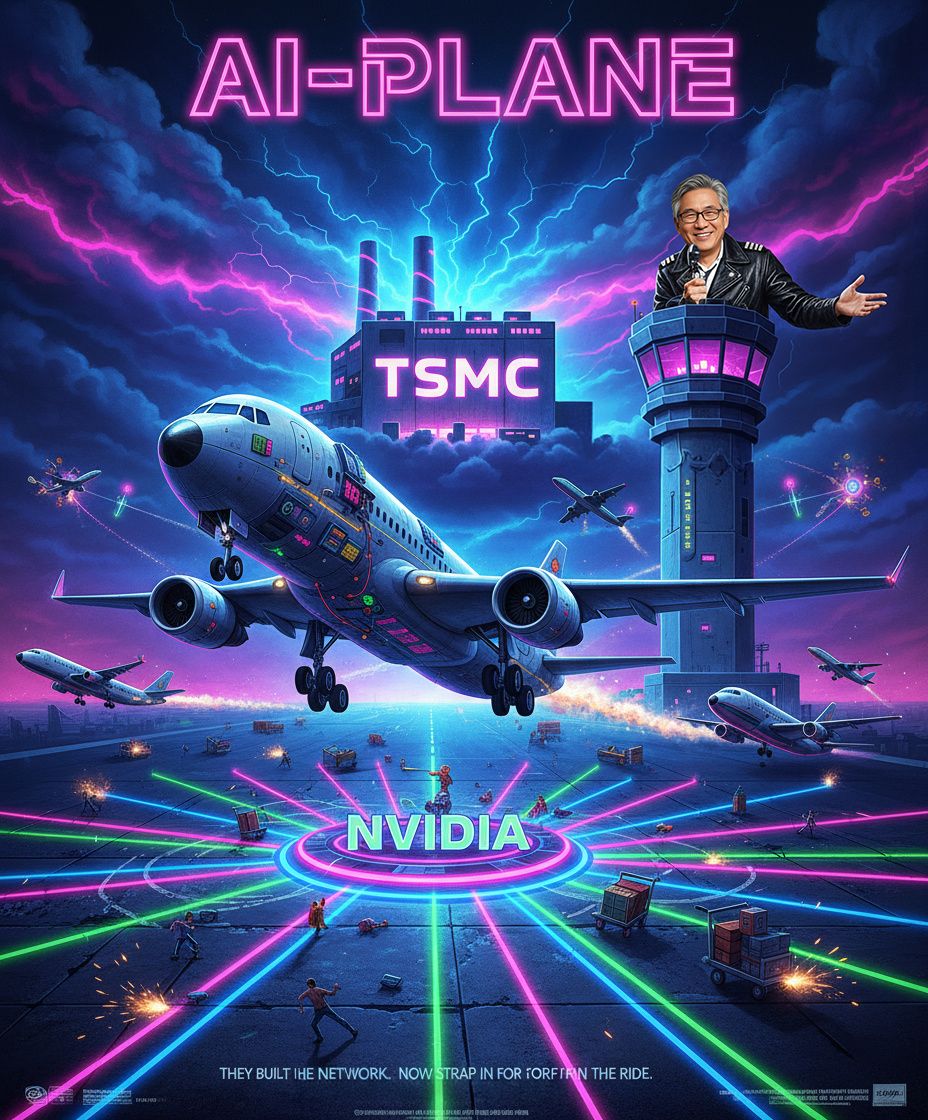- Sage Research (dot) AI
- Posts
- Nvidia (NVDA): The Multi Trillion Investment Question
Nvidia (NVDA): The Multi Trillion Investment Question
Did Jensen Huang build the ultimate hub? Really?
Welcome back friends...
Back in 1997 you could have packed your PC in the trunk of you AE86 Toyota…
And driven it to your friends house for a LAN party.
There, you played Quake II on NVidias first "hit" graphics card...
The RIVA 128.
Two years later NVidia would go public.
Today what was an unknown video game graphic card maker is now a household name...
And investors want to know how many more trillions in market cap it could rise.
If you had invested $10,000... it would now be worth $46 million dollars.
How long can this continue?
(Continued below…)

AI ARTISTS INTERPRETATION
Today we'll look in to their future network growth, risks and corridors to success...
So investors don't end up skidding off the runway like George Zipp.
✈ Network Growth (Full Throttle)
Jensen Huang, Nvidia’s leather-jacketed CEO, has become the Captain Oveur of the AI era -- calmly announcing over the intercom that everything is under control while piloting a (multi) trillion company through crowded skies.
The growth story is staggering.
GPUs have moved from gaming rigs to data centers, powering everything from ChatGPT to Tesla’s autonomous driving stack.
Every major cloud provider -- Amazon, Microsoft, Google -- now depends on Huang’s chips.
The more GPUs deployed, the stronger the hub becomes.
CUDA and Nvidia’s software ecosystem act like spokes locking customers in.
Each new model trained adds density to the web of digital connections, reinforcing Nvidia’s centrality.
This network effect feeds on itself: the more models built on Nvidia, the more the entire ecosystem standardizes around CUDA, cuDNN, and proprietary tools.
Like O’Hare’s endless tangle of runways, every path eventually circles back to Huang’s control tower.
⚡ Network Turbulence (Hub Risks Ahead)
But even Captain Huang can’t control the $39.1 billion data center skies forever.
Nvidia’s hub is massive -- and that scale brings fragility:
Competing Hubs Forming: AMD, Intel, and startups like Groq and Cerebras aren’t just rivals; they’re building alternative hubs. If enough spokes reroute, Nvidia’s dominance weakens.
Hyperscaler Independence: Amazon, Google, and Microsoft are designing their own chips. If the largest customers unplug, entire spokes could vanish overnight.
Single-Point-of-Failure Supply Chain: With TSMC as the only foundry runway for advanced GPUs, any disruption could snap Nvidia’s most critical spoke.
Valuation at the Threshold: At multi-trillion-dollar levels, perfection is priced in. Any crack in the spokes -- whether supply, competition, or demand -- could cascade through the network fast.
So, what’s ahead?
🛬 How’s the Flight Look?
For now, Nvidia still controls the skies. Its GPUs are booked out like peak-season flights into O’Hare, and Huang shows no signs of running out of fuel. But turbulence is real.
When a hub grows this large, even small disruptions ripple across the entire network. Competition, supply chain shocks, or hyperscalers pulling away could all test whether Nvidia’s spokes are strong enough to hold.
The future of AI won’t be written without Nvidia.
The only question is whether Captain Huang can keep the landing smooth.
For now, the other captains of the Mag7 -- Cook, Nadella, Pichai, Bezos, Zuckerberg, even Musk -- all glance toward Huang’s cockpit and say the same thing: “Good luck. We’re all counting on you.”
Huang couldn’t be any different than our next pilot.
In our next issue we'll cover Tesla and Elon Musk...
So, keep an eye on your inbox.
Until then...
Always be prospering,
socrAItes
Publisher, Sage Research (dot) AI